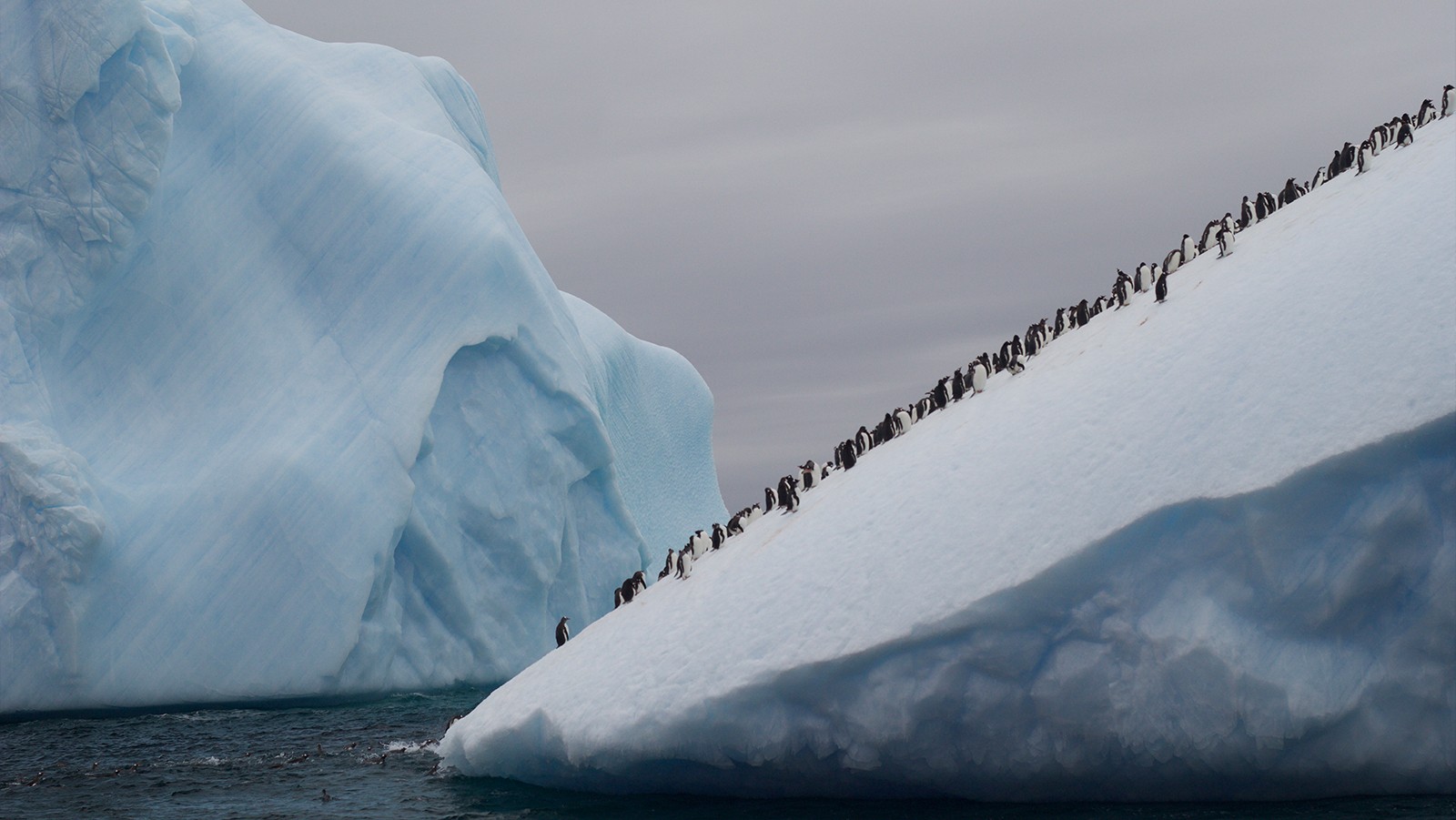At 20:00 at 64°S in the austral summer month of February, the sun was still high in the sky. It cast a delicate light over the sea surface dotted with icebergs, which ranged from small misshapen chunks to massive angular structures with marbled cliffsides. Most had at least one or two penguins or fur seals resting on the surface. The scientific team and crew were gathered on the bow to marvel at the Antarctic seascape when suddenly we saw the backs of two Minke whales break the surface not 10 meters from where we stood.
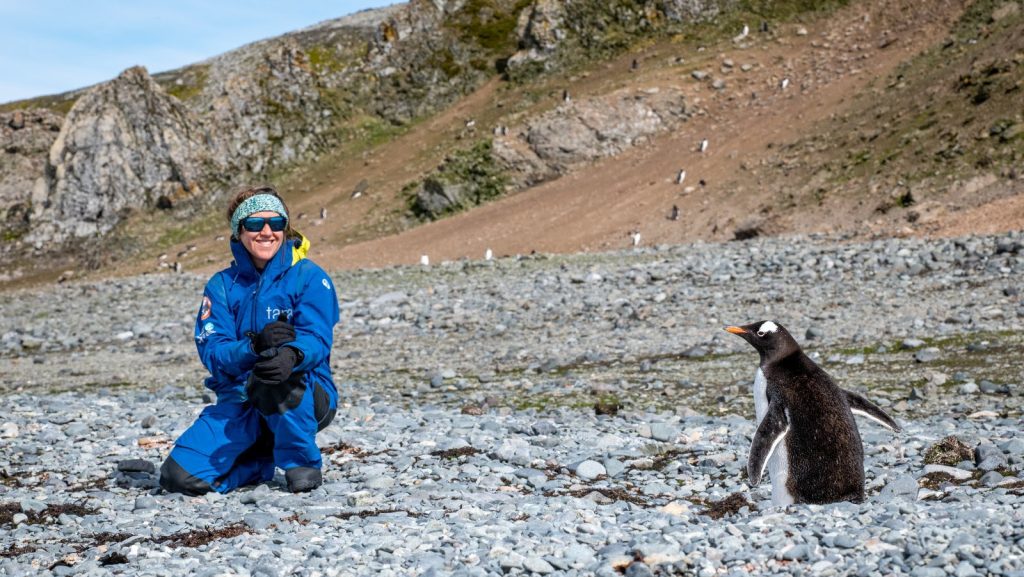
In January and February 2022, I took part in an Antarctic voyage aboard the French schooner Tara. My participation was part of a partnership between NOAA and AtlantECO, a European-led consortium to characterize, quantify, and model Atlantic Ocean ecosystems. Tara is the platform for its flagship cruise, Mission Microbiomes, an ambitious effort to apply standardized sampling protocols across multiple voyage legs over two years in the Atlantic and Southern Oceans.
I first heard about Tara Oceans when reading papers that used environmental DNA (“eDNA”) collected from sites all over the world’s oceans. Environmental DNA is collected from material like water or soil and contains genetic material of organisms who have shed cells in the habitat. They used a method called shotgun metagenomic sequencing, which encompasses all of the eDNA; it is the most powerful way of characterizing the microscopic life contained in a drop (or in Tara’s case, 20 liters) of water. Bioinformaticians (scientists that analyze biological data like genetic code) like myself can use metagenomes to reconstruct whole genomes without first isolating organisms in culture, an enormously valuable tool given that >99% of marine microbes have not been cultured. Genome sequences tell us not only who the microbes are but what they are doing; for example, whether they perform photosynthesis or recycle organic matter to fuel the eukaryotic plankton communities (otherwise known as the “biological pump”). The production and public release of these data have been a wonderful service to the marine science community and have resulted in hundreds of publications which have greatly expanded our understanding of critical oceanographic processes.
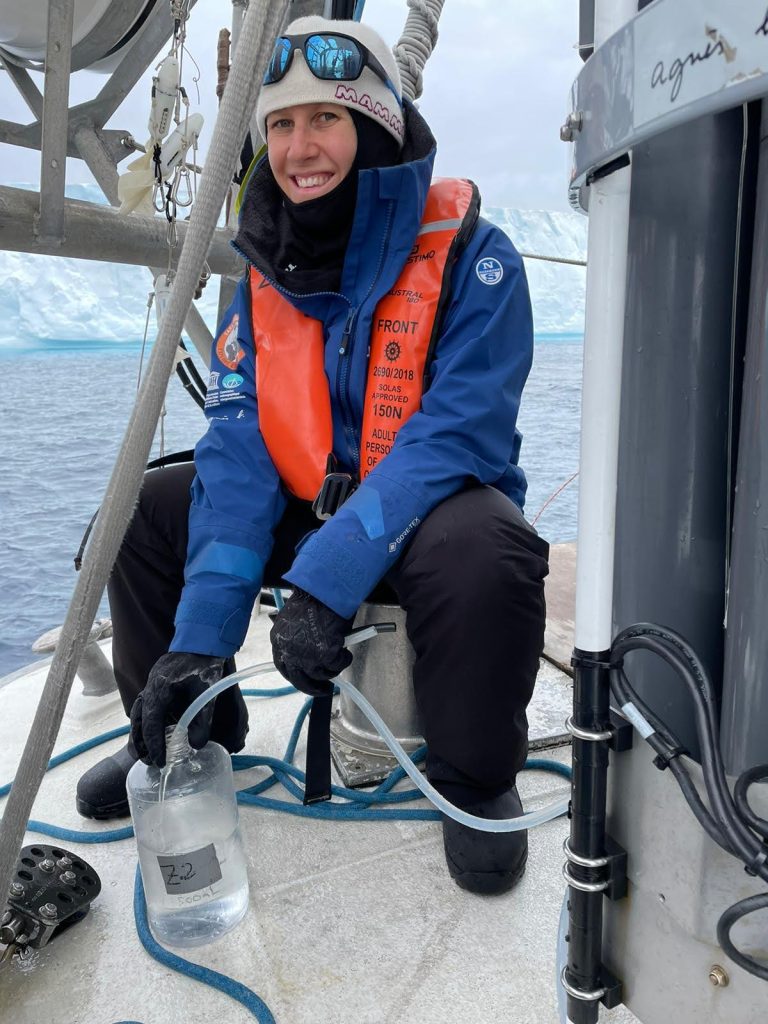
When I was given the opportunity to join one of the legs of Mission Microbiomes, I immediately jumped at it. Tara is a 36 m (118 ft) schooner (a boat with two masts). It was built in 1989 for an Arctic drift, a journey which involves trapping a boat in the polar ice pack, transporting it around the North Pole via the ice drift, and releasing it in the spring. Ironically, it was named Antarctica and didn’t perform the intended journey under its first owner. In 2000, it was purchased by Sir Peter Blake, the celebrated yachtsman who used it to promote environmental awareness and the impacts of climate change, and renamed Seamaster. Sir Peter was tragically killed by river pirates in the Amazon in 2001 and the boat was subsequently bought by the Tara Oceans Foundation.
Tara Oceans is only one project facilitated by the foundation. Other voyages included Tara Pacific, which sampled tropical coral reefs in the Pacific Ocean, and Tara Arctic, an 18-month expedition which fulfilled the original vision of the boat for an Arctic drift (only the second boat to ever do so, after Fridtjof Nansen completed a drift on the Fram in 1896). Mission Microbiomes is perhaps the most scientifically ambitious of all these projects. Along with protocols for sampling environmental DNA and RNA, which were the core of Tara Oceans, under the AtlantECO protocols we also measured biogeochemical parameters (including nutrients and oxygen and nitrogen isotopes), deployed plankton nets to characterize the phyto- and zooplankton communities, and even used a custom-built rosette to analyze trace metals. The latter was an important component of our work in the Southern Ocean, which, unlike all other oceans, is limited primarily by iron rather than macronutrients like nitrate and phosphate.
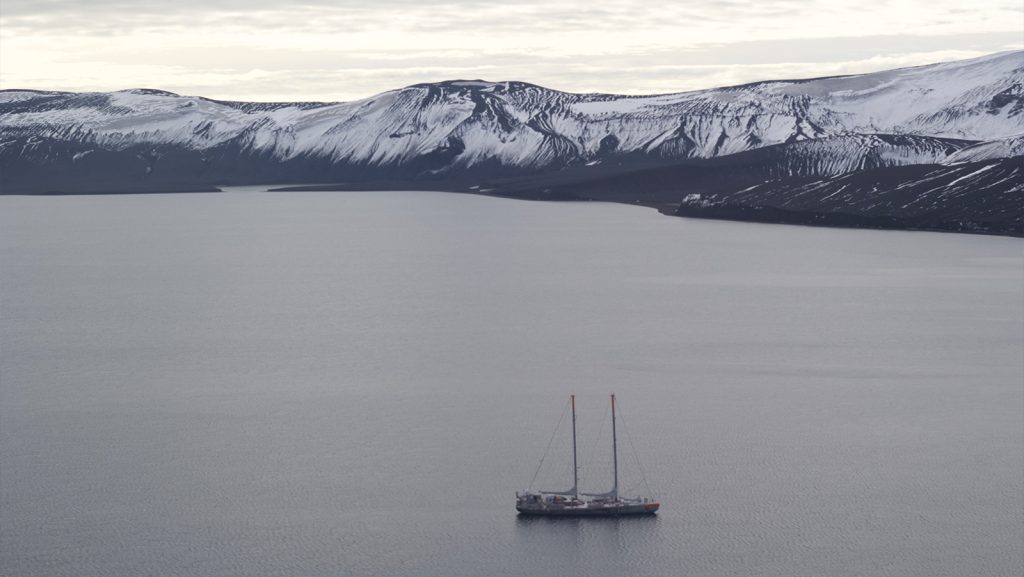
The sampling schedule was never unbearable in large part because every person aboard Tara was expected to work as an equal member of the team. Sailors and scientists shared all the duties from cleaning to night watches. On any given day, a Ph.D. student scrubbed toilets with the captain, the chief scientist labeled a hundred tubes, and the cook helped deploy the rosette. There was a very strong sense of camaraderie and team dynamic aboard the boat, unmatched to anything I had previously experienced in my field work. It was a spirit that kept everyone smiling even on days when work on deck was being done in the snow with 40-knot winds.
This is not to say there were no challenges working aboard Tara. Navigating conversations in French with nautical terms mixed in was challenging at times, but science was conducted in English which eased my work. I enjoyed the opportunity to immerse myself in French culture while at sea, which included perks like long lunch breaks and, on occasion, wine with dinner.
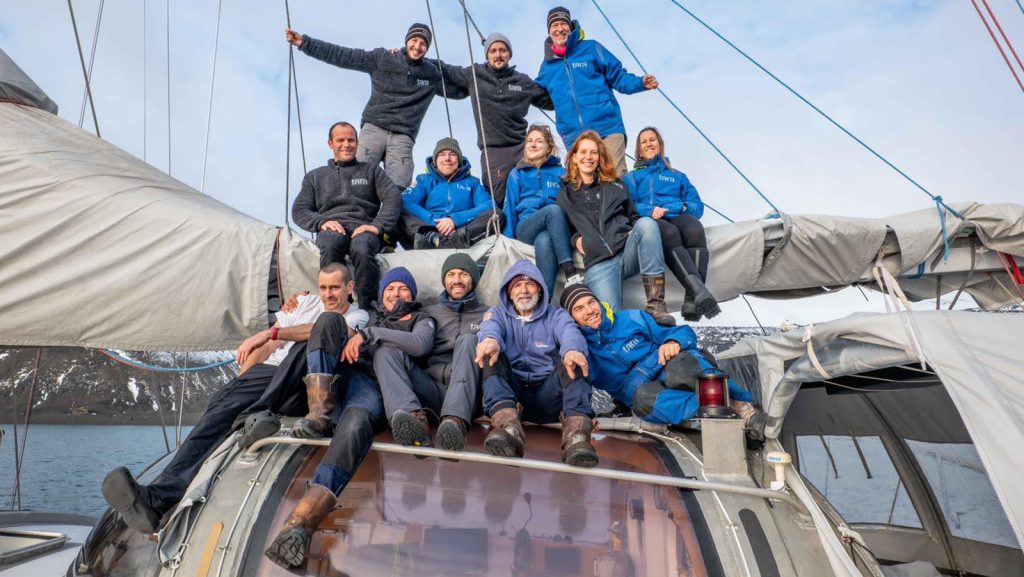
Tara also had the most limited internet policy I’ve encountered in the field. There was no access to the internet outside of a specially assigned email address and occasional WhatsApp functionality. The limited internet access was an obstacle to getting work done on some days, but in general it was quite wonderful to be “unplugged.” After dinner, instead of everyone disappearing into their phone or laptop, we had long conversations. We read books, sketched, and journaled. Some nights we went up on deck to enjoy the long daylight. It was in some ways a throwback to a past era of sea voyages where social media didn’t exist and conversations were the only way of connecting with our fellow humans.
My time aboard Tara showed me how much science can be accomplished with limited resources and a strong sense of purpose. Building on the success of Tara Oceans, Mission Microbiomes and AtlantECO are helping to unravel the microbial drivers of global oceanographic processes, which are crucial for understanding the present and predicting the future of our seas.
